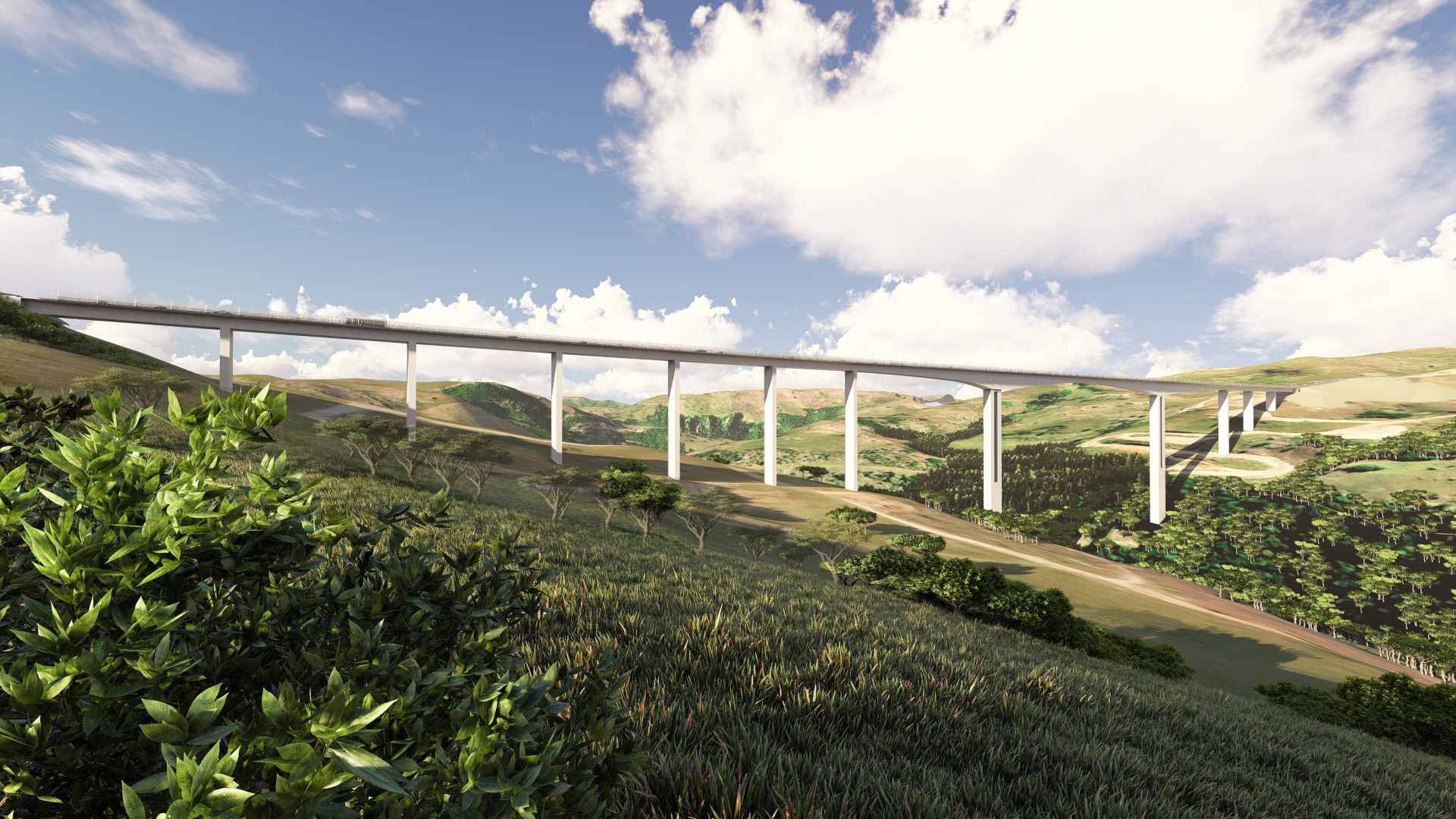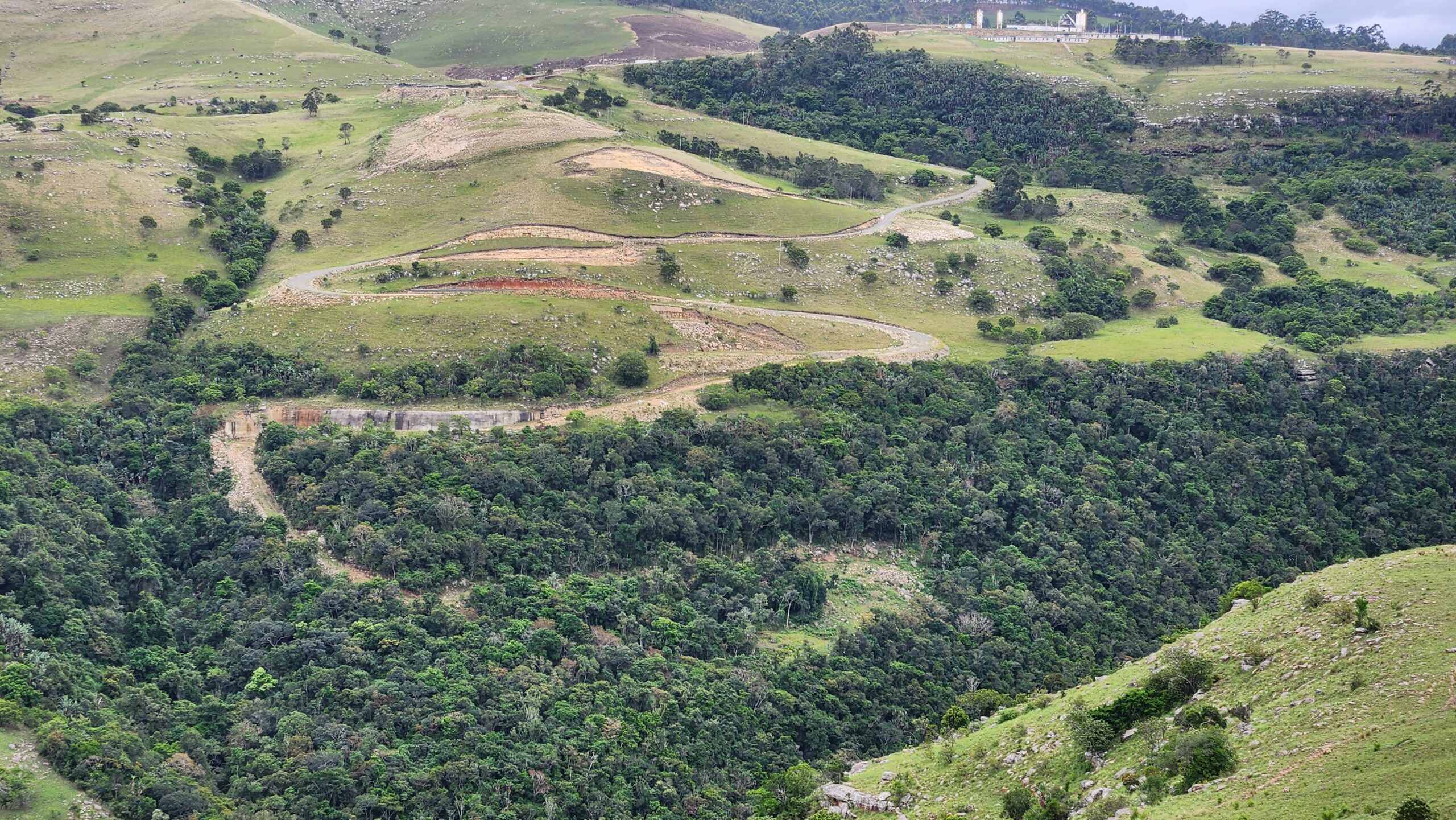The N2WCTR, which stretches from the Gonubie Interchange in East London to the Mtamvuna River near Port Edward, will shorten the current travel distance by 85 km resulting in a time saving of up to three hours. The project has created thousands of new jobs, as well as opportunities for SMMEs, women and youth – the benefits of which can and will be seen locally and regionally.
The ambitious project entails the construction of two mega-bridge structures, seven additional major river bridges and several interchange bridges, as well as new intersections, interchanges, pedestrian walkways and agricultural under- and over-passes.
Among the remarkable feats planned within the N2 Wild Coast Toll Road programme is the construction of Mtentu bridge near Lundini in the Eastern Cape province. Once completed, Mtentu Bridge will be Africa’s tallest bridge at a staggering 223 m high. With a length of 1.13 km, including a 260 m long main span, the bridge will also rank among the world’s longest main-span balanced cantilever bridges.
In August 2023, construction work on Mtentu Bridge commenced following a four-month ramp-up period. As the appointed bridge designers, SMEC South Africa and HVA JV partners CH2M and Axis, have played a pivotal role in the Mtentu Bridge project since its inception. The team is now involved in the construction monitoring and technical support services for the project.
During the concept and preliminary design stage, the team faced the challenge of creating a bridge that minimised environmental impact while adhering to aesthetic and cost-effective principles. Given the bridge’s location in a valley with steep sides, different vertical grades for the approach roads, ranging from 4% to 6%, were evaluated to optimise the alignment and reduce the bridge’s length. More than seven alternatives were assessed, all aimed at decreasing wind and seismic forces, reducing the size of the foundations, and employing well-established and uncomplicated design and construction methods. The optimisation process factored in cost, schedule, visual appearance, environmental impact and design and construction risks.
Several structural designs were considered, including long-span cable-stayed spans with 480 m main spans, a balanced-cantilever design with five spans, and a combination of a balanced-cantilever main span with incrementally launched approach spans. The last option was selected for detailed design.
The final bridge design consists of three balanced-cantilever spans with a 260 m main span. The approach spans are incrementally launched with 66 m spans, resulting in a total deck length of 1,133 m. The deck accommodates four traffic lanes, shoulders and two separate 1.4 m wide sidewalks. The bridge’s horizontal alignment is straight, while the approach spans follow vertical sag curves, necessitating the incrementally launched spans to follow a vertical arc. The main spans maintain a consistent gradient and all foundations are spread footings on rock, with main piers reaching heights of 148 m and approach span piers up to 80 m.
The deck is continuous, with expansion joints only at the abutments. This required the main piers to support significant loads during construction and seismic events while accommodating temperature-induced deflection. To achieve this, the main piers were constructed as twin-bladed hollow box sections. The deck’s cross-section at the front face of the main piers for the balanced-cantilever spans is supported on bearings, and these piers are also constructed as hollow box sections. The deck’s cross-section for the main spans varies from 15 m deep at the piers to 5 m deep at mid-span, while the approach spans are 5 m deep.
Mtentu is the second mega-bridge in the N2WCTR project and, together with the cable-stayed Msikaba bridge, will form part of the 112 km of new highway between Port St Johns and Port Edward. SMEC South Africa was closely involved in the design of the Msikaba bridge and is currently providing construction monitoring and technical support services for the project.












